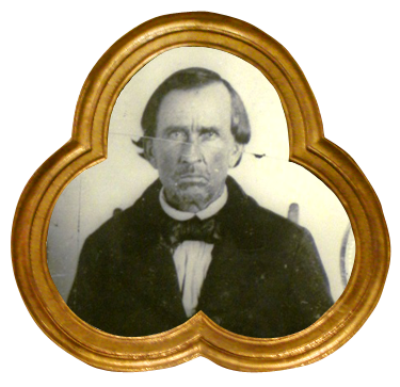
2010 located on east side of Cannon 
Elijah Cannon was born September 7, 1796, probably in England. His parents immigrated from England as a young couple and settled in Pickens Co., South Carolina. There Elijah grew to manhood and married Dorcas Bowen in Pickens Co., South Carolina. Dorcas died just months after their last child was born and was buried in the home county in July 1850. Elijah emigrated to Texas in 1852 along with his 11 children, widowed sister, Patsy Brown, and his slaves. They traveled the winding route of 1200 miles to southern Grayson County, Texas by wagon train and team. Game was plentiful - squirrels, prairie chickens, wild turkeys, rabbits. Some building materials had to be hauled from Jefferson, Texas in order to build their two-story house that had ten foot ceilings and large brick chimneys at each end of the house. Local building materials were milled from large trees that were along the Sister Grove Creek. The floors of the house were made of the Bois d'arc tree, which was bountiful in the area. The family made their house furnishing from the local wood supply. The Cannons
contributed to their community’s growth:
Death is inevitable. The Cannons gave ground for the cemetery, which was named for the family. Elijah and a host of his children are buried in the community cemetery. As the community thrived, a US Post office was established when population reached 400. James Binion was postmaster in 1889. ("Seven Postoffices in This Vicinity Now Discontinued." The Van Alstyne Leader, February 11, 1937, pg. 1) When Lincoln signed the Emancipation Proclamation, Elijah freed his slaves; he gave the name of “Boyd” to his slaves instead of their taking their owners surname, along with 20 acres of land to support themselves. There was no
public school during the mid 1800s. The first school at Cannon was built just
after the Civil War came to a close and was known as “Centennial
Institute”. The
school had a dormitory connected with it
that had 30 rooms. The
building was
destroyed by fire in the late 1880s.
source: History of Grayson Co., Texas, vol
I by Grayson Ccounty Frontier Village, c1979
Copyright © 2025, TXGenWeb. If you find any of Grayson County, TXGenWeb links inoperable, please send me a message. |
